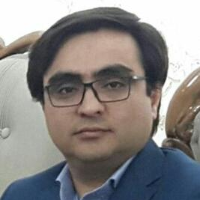Spatio-Temporal Dynamic of Urban Green Space Using Remote Sensing and Geographic Information System(Case Study: Ardabil City)
Rapid urbanization and constructions are considered as the main cause of many environmental problems on the earth, especially in urban areas. Todays, functional and structural roles of green spaces have been emphasized further in improvement of urban ecosystem. As green space is one of the most important classes of land use in urban ecosystem, studying its changes is an important step in order to improve human-dominant ecosystems.
In this study, remote sensing and geographical information system were used in order to investigate spatio-temporal changes of urban green space in Ardabil city. To achieve the mentioned purpose, Landsat satellite images including TM-1987, ETM+-2000 and OLI- 2014 were used.
Results indicate that green spaces in Ardabil city have intensely decreased during the investigated time and in the during past 27 years about 1507 hectares of the green spaces of this region have been constructed and only 8 per cent of the city is covered by green space.
Results show intensive changes in spatio-temporal green space pattern in Ardabil city. In order to prevent further destruction and elimination of urban green spaces, along with improving it in Ardabil City, the existent policies should be revised.
-
Pathology of Sustainable Rural Tourism in Rural Areas Based on Tourism Stakeholders Approach: A case study of Sarein City
*, Javad Madani
Human Geography Research Quarterly, Spring 2025 -
Investigating the Role of Culture with an Emphasis on Spirituality and Beliefs in Strengthening Social Cohesion (Case Study: Rural Areas of Chalvand Village, Astara City)
*, Tohid Karamzadeh
Entezam - e - Ejtemaei,



